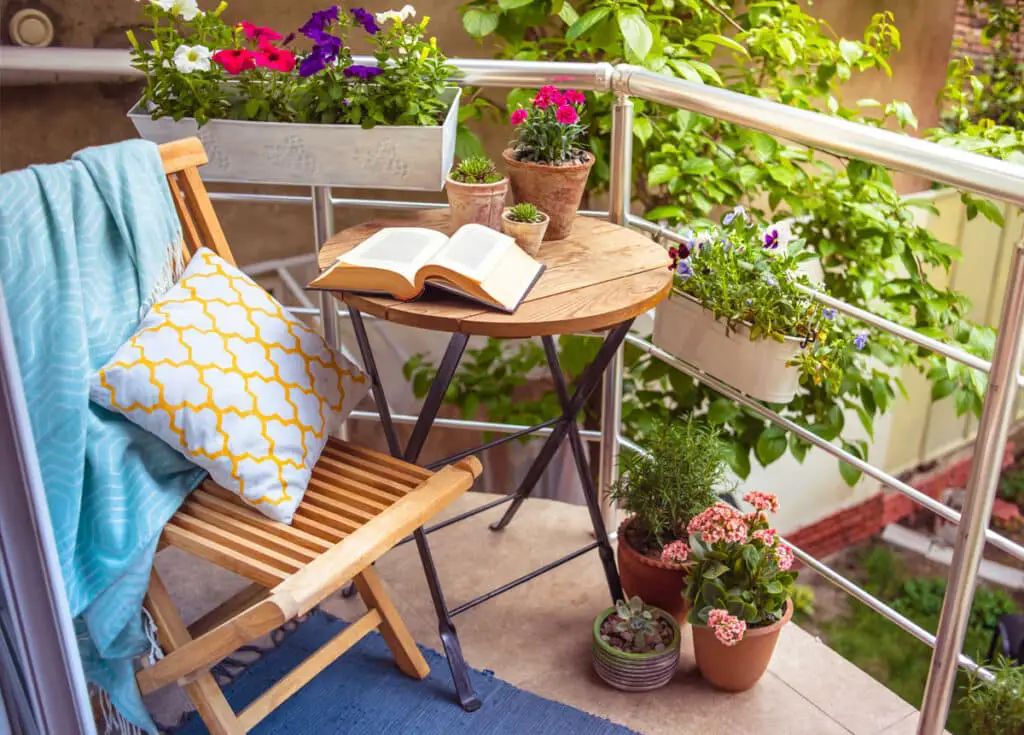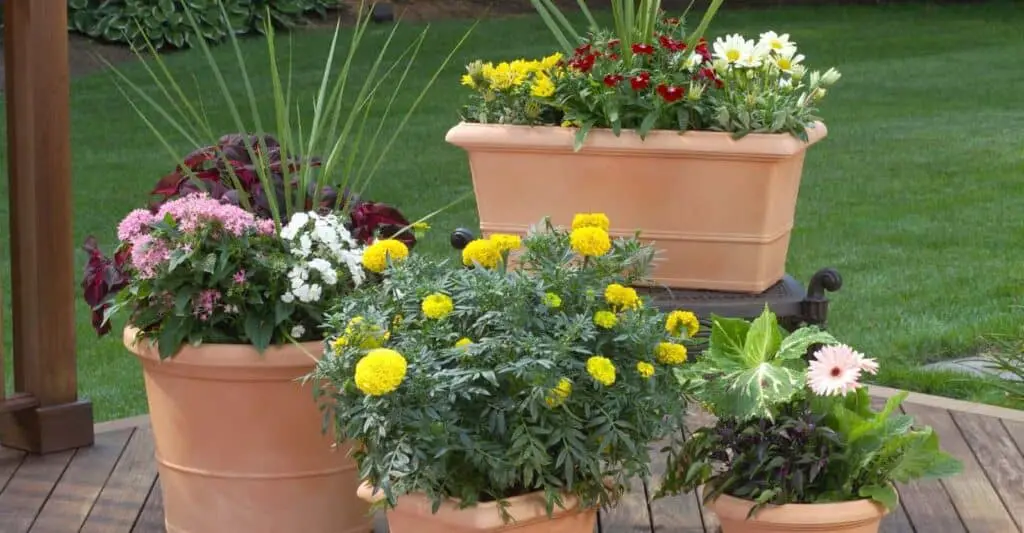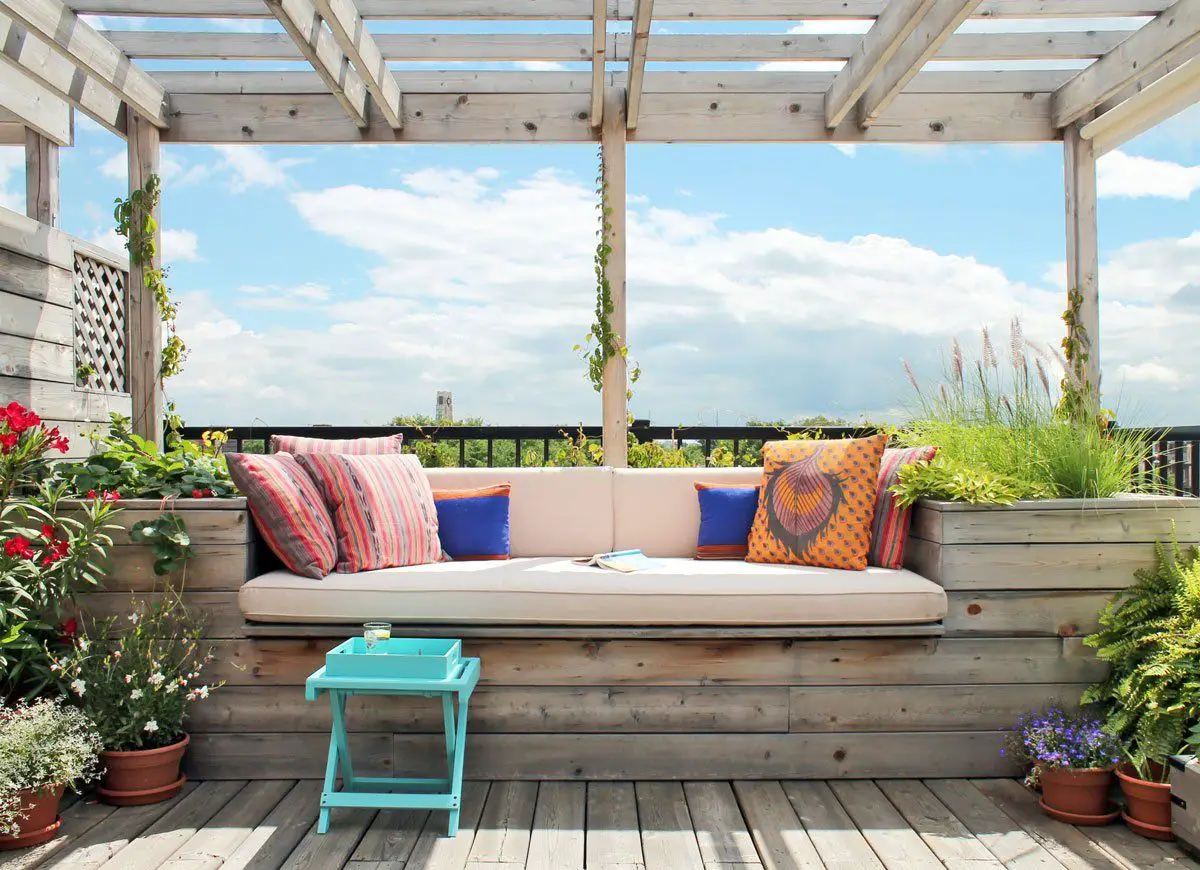What To Put Under Pots On Patio
Introduction
What To Put Under Pots On Patio: When it comes to creating a beautiful patio space, one of the key elements to consider is what to put under pots. While the pots themselves can add a touch of color and style to your outdoor area, it’s important to think about what lies beneath them. The right choice of material under your pots can not only enhance the overall aesthetic appeal of your patio but also provide practical benefits.
One option to consider is using a saucer or tray under your pots. These can be made of various materials such as plastic, ceramic, or metal. Saucers and trays are designed to catch excess water that drains out of the pots, preventing it from seeping into the ground or staining your patio surface. They also help to keep the area around your pots clean and free from water damage. Additionally, saucers and trays can be easily removed and cleaned, making them a convenient choice for maintaining your cheap patio space.
Another popular choice for what to put under pots on a patio is gravel or pebbles. This natural material not only adds a decorative touch but also provides excellent drainage for your plants. By placing a layer of gravel or pebbles under your pots, you can ensure that excess water flows away from the roots, preventing root rot and other water-related issues. Gravel or pebbles also help to create a stable base for your pots, preventing them from tipping over or sinking into the ground.

What do you put under outdoor potted plants?
When it comes to outdoor potted plants, it is important to choose the right materials to place underneath them. This not only helps to enhance the overall appearance of the plants but also provides necessary support and protection. There are several options available for what to put under outdoor potted plants, each with its own benefits and considerations.
One common choice is to use a saucer or tray underneath the pot. This helps to catch any excess water that drains out of the pot, preventing it from pooling on the ground and potentially causing damage. Saucers and trays are typically made of plastic or ceramic and come in various sizes to accommodate different pot sizes. They are easy to clean and can be decorative, adding an extra touch to the overall aesthetic of the plant.
Another option is to use a layer of rocks or pebbles at the bottom of the pot. This helps to improve drainage by creating a space for excess water to collect and flow away from the plant’s roots. Rocks and pebbles also add weight to the pot, making it more stable and less likely to tip over in windy conditions. However, it is important to ensure that the layer of rocks or pebbles does not take up too much space, as this can limit the amount of soil available for the plant’s roots to grow.
If you prefer a more natural look, you can consider using a layer of mulch or wood chips underneath your outdoor potted plants. Mulch helps to retain moisture in the soil, reducing the need for frequent watering. It also acts as a barrier, preventing weeds from growing around the plant.
How do you protect patio from pots?
Protecting your patio from pots is essential to prevent damage and maintain its appearance. Pots can cause scratches, stains, and even cracks on the patio surface if not properly protected. Fortunately, there are several measures you can take to safeguard your patio from pots and ensure its longevity.
1. Use pot saucers or trays: Placing pot saucers or trays underneath your pots is a simple yet effective way to protect your patio. These saucers or trays catch any excess water or soil that may leak from the pots, preventing it from coming into direct contact with the patio surface. Make sure to choose saucers or trays that are large enough to accommodate the size of your pots.
2. Add furniture pads: Another option to protect your patio from pots is to attach furniture pads to the bottom of the pots. These pads act as a cushion between the pot and the patio surface, reducing the risk of scratches or cracks. Choose furniture pads that are suitable for outdoor use and can withstand the weight of the pots.
3. Place pot feet: Pot feet are small elevating devices that can be placed underneath the pots. They help to lift the pots slightly off the patio surface, allowing for better air circulation and drainage. This prevents water from pooling under the pots and reduces the chances of stains or damage to the patio.
4. Use a potting bench: If you frequently move pots around on your patio, consider investing in a potting bench. A potting bench provides a dedicated space for potting and arranging plants, reducing the risk of accidentally dragging or scraping pots across the patio surface. It also allows for easier cleaning and maintenance of the patio.
What do you put under pots?
What you place under your pots can affect your plants’ health and growth. Each choice has pros and cons.
Many choose a saucer or tray. These plastic or ceramic catchers catch pot drainage water. Avoiding water accumulating around the pot base can avoid root rot and other difficulties. Saucers and trays make watering plants easier because you can pour water into the tray and let it soak up.
Another option is potting mats or matting. Under the plant, these porous felt or fabric pads absorb excess water. Potting mats prevent water from sitting on the saucer or tray, which attracts bugs and grows mold and mildew. They also prevent water damage to furniture and carpeting by separating the pot from the surface.
If you desire a natural drainage layer, use rocks or pebbles. This includes layering rocks or pebbles at the pot bottom before adding soil and the plant.
How do you keep pots off the ground?
Keeping pots off the ground is essential for several reasons. Firstly, it helps to prevent damage to the pots themselves. When pots are placed directly on the ground, they are more susceptible to cracking or breaking due to moisture, temperature changes, and pests. By elevating the pots, you can protect them and extend their lifespan.
Secondly, keeping pots off the ground can improve drainage. When pots are placed on a solid surface, excess water can accumulate at the bottom, leading to root rot and other moisture-related issues. By raising the pots, you allow for better airflow and drainage, which is crucial for the health of your plants.
There are several ways to keep pots off the ground. One common method is to use pot feet or pot risers. These are small, often decorative, objects that are placed under the pots to elevate them. Pot feet can be made of various materials such as clay, plastic, or metal, and they come in different shapes and designs to suit your aesthetic preferences.
Another option is to use pot stands or plant stands. These are larger structures that can hold multiple pots at different heights. Pot stands are usually made of metal or wood and can be placed on patios, decks, or even indoors. They not only elevate the pots but also add a decorative element to your garden or living space.
If you prefer a more DIY approach, you can create your own pot risers using materials like bricks, stones, or even repurposed items such as old tiles or pieces of wood. Simply place these objects under the pots to raise them off the ground. This method allows for flexibility in terms of height and design, as you can choose materials that match your garden or personal style.
What is the best thing to put in the bottom of pots for drainage?
When it comes to gardening, proper drainage is essential for the health and well-being of your plants. Without adequate drainage, excess water can accumulate in the bottom of pots, leading to root rot and other issues. To prevent this, it is important to use a suitable material at the bottom of your pots to facilitate drainage. There are several options available, each with its own advantages and disadvantages.
Broken pottery’s irregular shapes produce air pockets that aid aeration and prevent water from accumulating at the bottom.
For a more eco-friendly option, fill your pots with wood chips or bark. These materials drain and degrade, adding nutrients to the soil. Organic materials decay faster than others, therefore they may need to be replaced more often.
When planting pots on a patio, choose materials that preserve the pots and patio surface. Pot feet or risers, little platforms under pots, are a common choice. The pot feet elevate the pots slightly off the patio surface, improving drainage and avoiding water from gathering. Pot feet are constructed of plastic, rubber, or ceramic and vary in shape and size to fit different pots.
Are there any specific products designed for placing under pots on a patio?
There are various devices designed to go under patio pots. These devices are made to prevent patio water damage and support planters. Pot feet or risers, little platforms under pots, are popular. Pot feet elevate pots off the ground, improving drainage and minimizing water pooling.
Shallow pot saucers or trays can catch excess water under pots. Plastic or ceramic saucers or trays available in various sizes to fit different pots. Water damage to the patio surface and overwatering of the soil are prevented by them.
Additionally, there are also specialized patio pot pads or mats available that are made of materials like rubber or cork. These pads or mats provide a cushioning effect and help to prevent scratches or marks on the patio surface. They also help to absorb excess water and prevent it from reaching the patio.
How can I prevent water damage to my patio when placing pots on it?
When placing pots on your patio, it is important to take measures to prevent water damage. One effective way to do this is by using pot saucers or trays. These are specifically designed to catch excess water that drains out of the pots, preventing it from seeping into the patio surface. Pot saucers or trays are typically made of materials such as plastic or clay, and they come in various sizes to accommodate different pot sizes.
Another way to prevent water damage is by using a protective barrier under the pots. There are several suitable materials that can be used for this purpose. One option is to place a layer of gravel or pebbles under the pots. This allows for proper drainage and prevents water from pooling directly on the patio surface. Another option is to use rubber or cork pads under the pots. These materials provide a cushioning effect and help to prevent any moisture from seeping into the patio.
Are there any DIY solutions for creating a protective barrier under pots on a patio?
Yes, there are several DIY solutions for creating a protective barrier under pots on a patio. One option is to use a layer of gravel or small rocks. This can help to improve drainage and prevent water from pooling underneath the pots. Simply spread a layer of gravel or rocks evenly across the patio surface where the pots will be placed. Another DIY solution is to use a layer of landscape fabric or weed barrier. This can help to prevent soil and water from seeping into the patio surface. Cut the fabric or barrier to fit the size of the pot and place it underneath before placing the pot on top.
Additionally, you can also use cork or rubber pads as a protective barrier. These materials provide a cushioning effect and can help to prevent scratches or damage to the patio surface. Cut the pads to fit the size of the pot and place them underneath before placing the pot on top. Another DIY solution is to repurpose old tiles or bricks. Simply place the tiles or bricks underneath the pots to create a protective barrier. This not only helps to prevent water damage but also adds a decorative touch to your patio.
What are the benefits of using pot saucers or trays under pots on a patio?
Using pot saucers or trays under pots on a patio can provide several benefits. Firstly, they help to prevent water damage to the patio surface. When water drains out of the pot, it can seep into the patio material and cause staining, discoloration, or even structural damage over time. By placing a saucer or tray underneath the pot, it catches the excess water and prevents it from coming into direct contact with the patio, thus protecting it from potential damage.
Secondly, pot saucers or trays can help to maintain a cleaner and tidier patio. When water drains out of the pot onto the patio surface, it can create puddles or leave behind unsightly water stains. By using a saucer or tray, the water is contained within the tray, preventing any mess or water marks on the patio. This makes it easier to keep the patio clean and presentable.

Conclusion
When it comes to decorating a patio, one of the key elements to consider is what to put under pots. This decision is not only important for aesthetic purposes but also for the health and well-being of the plants. The right choice can help prevent water damage, promote proper drainage, and enhance the overall look of the patio.
One option for what to put under pots on a patio is a saucer or tray. These are typically made of plastic or ceramic and are designed to catch excess water that drains out of the pots. Saucers and trays are available in various sizes and shapes to accommodate different pot sizes and styles. They not only protect the patio surface from water damage but also prevent water from pooling around the pots, which can lead to root rot and other patio plant diseases.
Another popular choice is a pot riser or feet. These are small platforms or stands that elevate the pots slightly above the patio surface. Pot risers can be made of materials such as plastic, rubber, or metal. They provide better airflow and drainage for the pots, preventing water from getting trapped underneath. Pot risers also help protect the patio surface from discoloration or staining that can occur when pots are in direct contact with it.
If you prefer a more natural look, you can consider using gravel or pebbles. These can be spread evenly on the patio surface under the pots. Gravel and pebbles not only provide a decorative touch but also aid in drainage. They allow excess water to flow away from the pots, preventing waterlogging and promoting healthier plant growth. Additionally, gravel or pebbles can help prevent weeds from growing around the pots, reducing the need for frequent maintenance.








